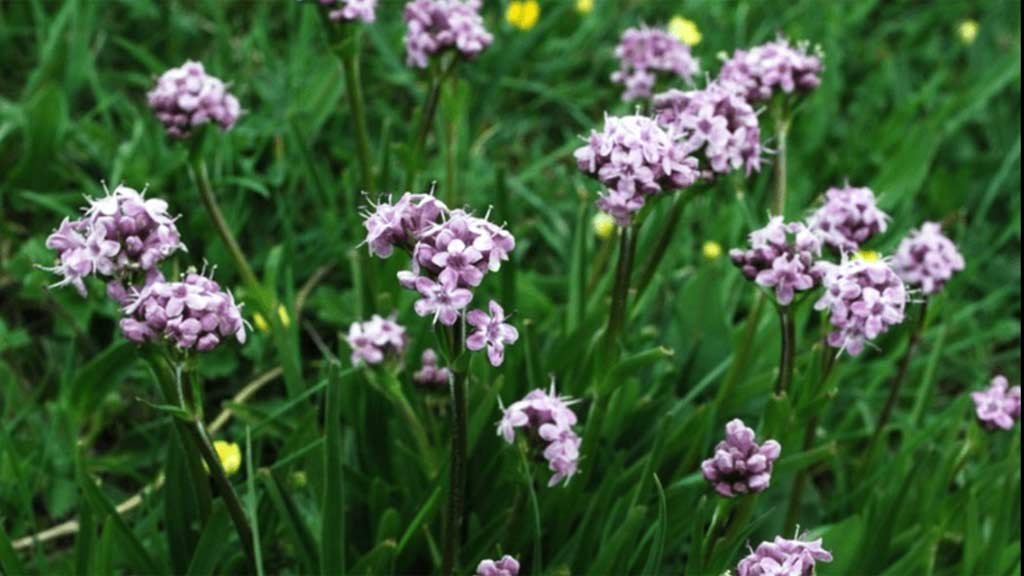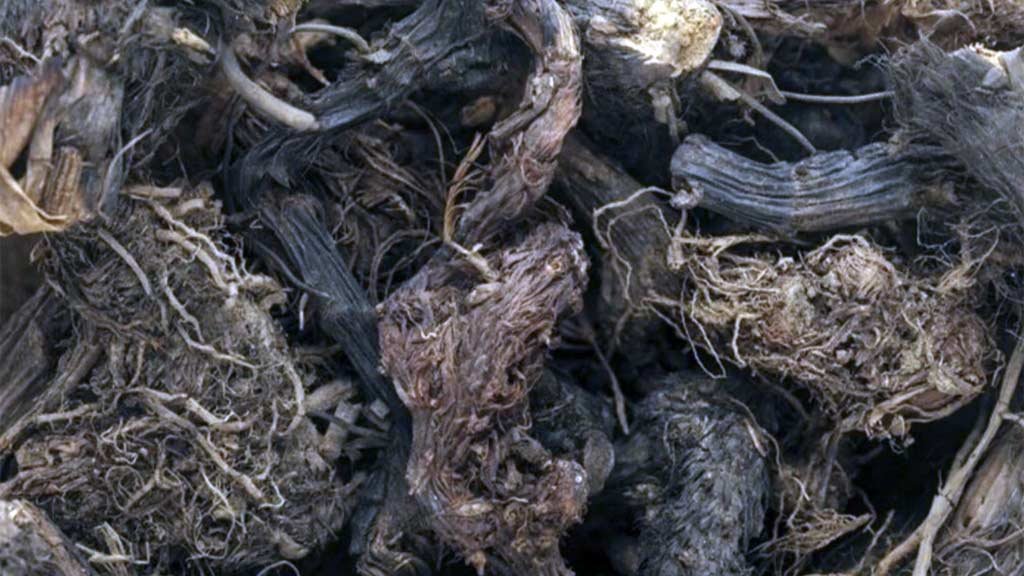The Quiet Power of Jatamansi
Some herbs announce themselves loudly—sharp scents, bold flavors, a reputation that precedes them. Jatamansi (Nardostachys jatamansi) is different. It’s earthy, grounding, and has a kind of quiet power that grows on you the more you learn about it. Traditional Ayurvedic texts call it a rasayana, a rejuvenative, particularly for the nervous system and the mind. Imagine a root that’s been pulled from Himalayan soil, carrying with it the stillness of high mountain air. That’s Jatamansi.
Table of Contents
A Root with Deep Ayurvedic Roots
In Ayurveda, balance is everything. Too much vata and you feel restless. Too much pitta and you’re irritable, overheated. Too much kapha and you sink into sluggishness. Jatamansi is said to balance all three doshas, though it’s especially valued for calming vata—the dosha of wind, movement, and anxiety.
Ancient physicians used it for:
- Restless sleep
- Nervous exhaustion
- Heart palpitations brought on by stress
- Memory and concentration problems
It’s striking how these uses, recorded centuries ago, match modern concerns. Stress. Burnout. Mental fog. The more things change, the more they stay the same.
What Makes Jatamansi Special
Phytochemistry might not sound sexy, but here’s where the magic lies. Jatamansi contains sesquiterpenes, jatamansone (also called valeranone), and other volatile oils. These compounds have been studied for their sedative, neuroprotective, and antioxidant effects.
Modern science is starting to back up the old claims. Some findings include:
- Neuroprotection: Animal studies suggest Jatamansi helps protect brain cells from oxidative stress, which is linked to aging and degenerative conditions.
- Cognitive support: Extracts have shown promise in improving learning and memory in lab settings.
- Anti-stress effects: Research indicates it lowers stress-induced biochemical changes, like high cortisol levels.
- Mood regulation: There’s preliminary evidence that it may act as a natural antidepressant by balancing neurotransmitters.
Of course, we should be cautious—many studies are preclinical. But the alignment between traditional knowledge and modern research is compelling.
Stress Relief: Jatamansi in Practice
If you’ve ever felt your mind buzzing with unfinished tasks, or your chest tightening with the pressure of too many demands, you’ll understand why a herb like Jatamansi has staying power. Its root has a damp, musky aroma that Ayurvedic healers believed soothed both mind and spirit. In practice, people turn to it for:
- Evening teas that settle the nervous system before bed
- Herbal oils, massaged into the scalp to calm overthinking
- Powder mixed with honey for clarity during exams or study sessions
One story that always stuck with me: a teacher in India who would give his students a pinch of jatamansi powder mixed with ghee during exam weeks. He swore it steadied their minds. You can dismiss that as folk wisdom if you like, but when you watch a group of kids sit calmer, a little more grounded, it’s hard not to take it seriously.
Jatamansi vs. Valerian
People often compare Jatamansi with valerian root. Both are sedative herbs, both used for sleep. But they feel different. Valerian has a sharp, almost acrid note, while Jatamansi is softer, earthier. Valerian can sometimes leave people groggy the next day; Jatamansi tends to work more gently, allowing clearer mornings. Ayurveda also frames Jatamansi not just as a sleep aid but as a tonic for mental clarity—something valerian doesn’t really claim.
Supporting Mental Clarity
It seems almost paradoxical: a root that calms stress yet sharpens the mind. But that’s exactly the balance Jatamansi offers. When stress hormones aren’t flooding your system, your brain works better. Focus comes more easily. Memory sticks.
Ayurvedic texts describe it as medhya—meaning supportive of intellect. In practical terms, that could look like:
- A student using it to stay focused without stimulants
- A professional leaning on it to handle stress without losing clarity
- An elder taking it as part of a regimen to keep memory sharp
Neuroprotective research supports this. By reducing oxidative damage and inflammation in brain tissue, Jatamansi may help keep cognitive decline at bay.

How People Use It Today
You’ll find Jatamansi in several forms:
- Powder (churna): Often taken with warm milk, honey, or ghee.
- Capsules or tablets: Standardized extracts for convenience.
- Essential oil: Used in aromatherapy for grounding and relaxation.
- Herbal hair oils: Popular in India for calming the mind and promoting healthy hair growth.
Some practitioners blend it with ashwagandha or brahmi for a more complete adaptogenic formula. Ashwagandha for strength, brahmi for sharpness, Jatamansi for calm—it’s a trio many Ayurvedic doctors rely on.
Mushrooms and the Nervous System
Since the topic crosses into medicinal mushrooms, it’s worth noting: Jatamansi often finds itself mentioned alongside herbs and fungi that support brain health. Lion’s mane mushroom, for example, is studied for nerve growth factor stimulation. Reishi, another, has calming adaptogenic properties. Together, they form a kind of herbal-mycological toolbox for resilience. Jatamansi stands out because of its deep grounding energy—it feels like a root that steadies, while mushrooms expand and protect.
Safety and Considerations
No herb is perfect. Jatamansi is generally safe, but there are things to keep in mind:
- High doses can cause excessive drowsiness.
- Because it lowers stress hormones, it might interact with sedatives or antidepressants.
- Pregnant or breastfeeding women should avoid it unless guided by a qualified practitioner.
Tradition says the root works best in moderation, in synergy with other herbs, and with lifestyle practices—regular sleep, meditation, gentle exercise.
Living with Jatamansi
I’ll admit, I didn’t “get” Jatamansi the first time I tried it. It tasted too earthy, like chewing on damp soil. But over time, I came to appreciate that very earthiness. It felt grounding, like it was pulling me out of my head and back into my body. A tea at night, a drop of oil massaged into the temples—it didn’t knock me out, but it quieted the static.
Isn’t that what most of us need? Not sedation, not stimulation, but a little bit of space in the mind. Room to breathe. Jatamansi doesn’t demand; it offers. It doesn’t shout; it whispers. And if you listen, you just might hear the calm you’ve been looking for.
Article Sources
At AncientHerbsWisdom, our content relies on reputable sources, including peer-reviewed studies, to substantiate the information presented in our articles. Our primary objective is to ensure our content is thoroughly fact-checked, maintaining a commitment to accuracy, reliability, and trustworthiness.
- Bhatnagar, M., Sisodia, S. S., & Bhatnagar, R. (2009). Anti‐stress activity of Nardostachys jatamansi. Indian Journal of Pharmacology, 41(5), 192–196. https://www.ncbi.nlm.nih.gov/pmc/articles/PMC2812742
- Joshi, H., & Parle, M. (2006). Nardostachys jatamansi improves learning and memory in mice. Journal of Medicinal Food, 9(1), 113–118. https://doi.org/10.1089/jmf.2006.9.113
- Kumar, V., & Singh, P. N. (2012). Jatamansi (Nardostachys jatamansi DC.)—A review on ethnopharmacology and phytochemistry. International Journal of Pharmaceutical Sciences and Research, 3(7), 2123–2130. https://ijpsr.com/bft-article/jatamansi-nardostachys-jatamansi-dc-a-review-on-ethnopharmacology-and-phytochemistry
- National Center for Complementary and Integrative Health. (2020). Adaptogens: What you need to know. U.S. Department of Health & Human Services. https://www.nccih.nih.gov/health/adaptogens-what-you-need-to-know
- Singh, R. H., & Narsimhamurthy, K. (2011). Neuropharmacological perspectives of Ayurvedic herbs with special reference to memory enhancement. Indian Journal of Traditional Knowledge, 10(3), 426–432. http://nopr.niscpr.res.in/handle/123456789/12125
- Singh, S., Majumdar, D. K., & Rehan, H. M. (2001). Evaluation of anti-inflammatory potential of fixed oil of Nardostachys jatamansi in rats. Journal of Ethnopharmacology, 75(1), 65–69. https://doi.org/10.1016/S0378-8741(00)00401-0

